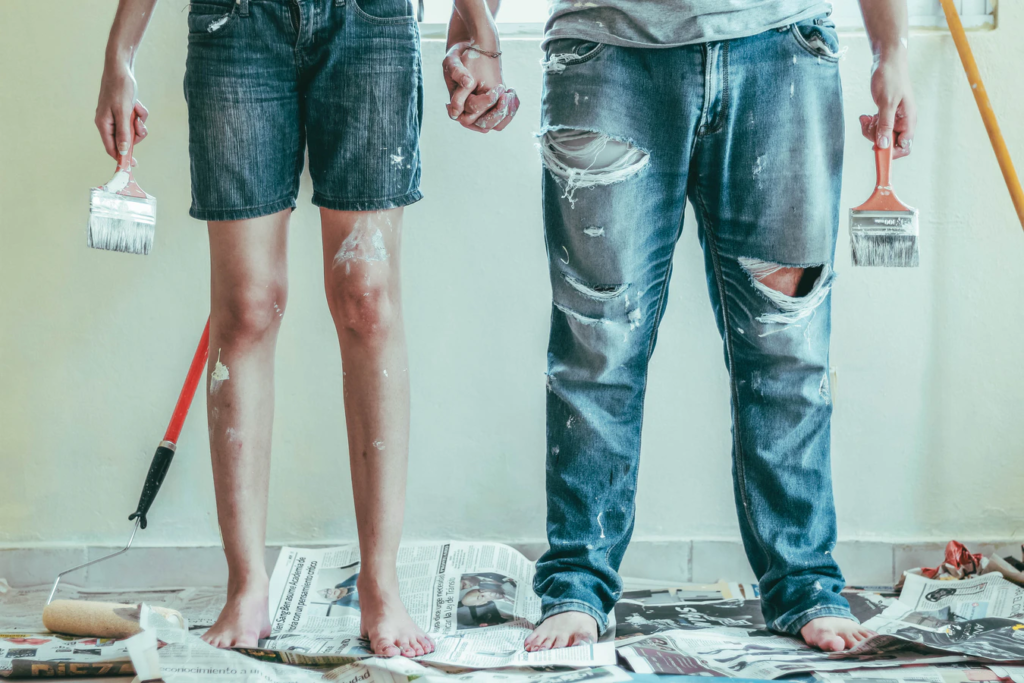DIY DANGER: The DIY jobs most likely to send you to A&E, revealed ? ?

In response to NHS Data, ElectricalDirect have put together a breakdown of the riskiest jobs for DIY amateurs.
DIY is a national obsession in the UK, and one which has only increased over the last few months in response to the Covid-19 crisis. Locked away, Brits have remembered that there’s nothing more satisfying than a job well done, especially when that job is one which saves us money and improves our homes.
But is getting the old tool box out always the best idea? With any DIY job comes risk, so to help you minimise that risk, we’ve discovered which jobs most risk landing you a trip to A&E, and which are likely to land you with a costly bill if your substandard work needs to be redone by a professional!
DIY to A&E – Jobs involving ladders are the DIY job most likely to end in a trip to hospital.
According to the NHS, the majority of DIY related incidents involve a fall from the DIY staple, the ladder. According to NHS data, accidents involving ladders are responsible for an average of 6,073 trips to hospital a year, significantly higher than any visits relating to any other kind of furniture!
ElectricalDirect spoke to joiner Richard Chippendale, who recommends that DIY enthusiasts ensure that they avoid using ladders alone, and that they always have someone on hand to steady them to ensure accidents are less likely.
Power Tools in novice hands are responsible for almost 5,000 trips to A&E per year
The second most common DIY accidents come as a result of power tools. While a tumble from a ladder is unlikely to be pleasant and could be very dangerous, a power tool, while responsible for lesser numbers of accidents, is likely to be far more painful and damaging. And with on average 4,285 trips to A&E a year as a result of power tools, it’s something to be considered before embarking on projects around the home.
Richard added “when using power tools, people should always make sure they’re comfortable with the tools before embarking on any project that requires them. Always read the instructions and practice – don’t rush, and be aware of the danger from the moment you plug them in.”
No electricity doesn’t mean no danger, with over 3000 trips to A&E due to non-electrical tools.
Non-powered hand tools are responsible for an average of 3,224 trips to A&E per year, almost as much as their electrical powered counterparts. While they may pose less immediate or obvious danger, it doesn’t mean that people should be complacent with non powered tools. Richard added “just because these tools are a part of everyday life does not mean that tools are not dangerous and shouldn’t be treated with the utmost respect and consideration in order to avoid accidents!”
The garden poses its own risks.
Work on the home is not limited to inside the house, and while internal DIY has boomed in lockdown, as has gardening, which brings its own horticultural risks to the table. With contact with powered Lawn mowers being responsible for an average of 511 hospital visits per year, safety consideration should be just as important outside as in. Lawn mowers can be just as dangerous as any other power tool and should be treated as such!
The most expensive dodgy DIY jobs to fix
DIY might have boomed in the pandemic as a result of people stuck in their houses, with little else to do beyond observing their homes imperfections, but pre-covid DIY was a hobby, or more often than not, a project that people embarked upon in order to save money. But apart from risking your well-being by DIYing your property, you might also be risking your bank balance, with it costing more to fix jobs you’ve gotten wrong rather than hiring someone in to do the work in the first place.
Richard added “By far the most expensive DIY mistakes to fix are in kitchen and bathrooms, a small mistake when attempting a job yourself can lead to the entire kitchen or bathroom needing to be replaced, which could set you back thousands. To avoid this, always be sure to call a professional for any tasks especially involving water or electricity”.





